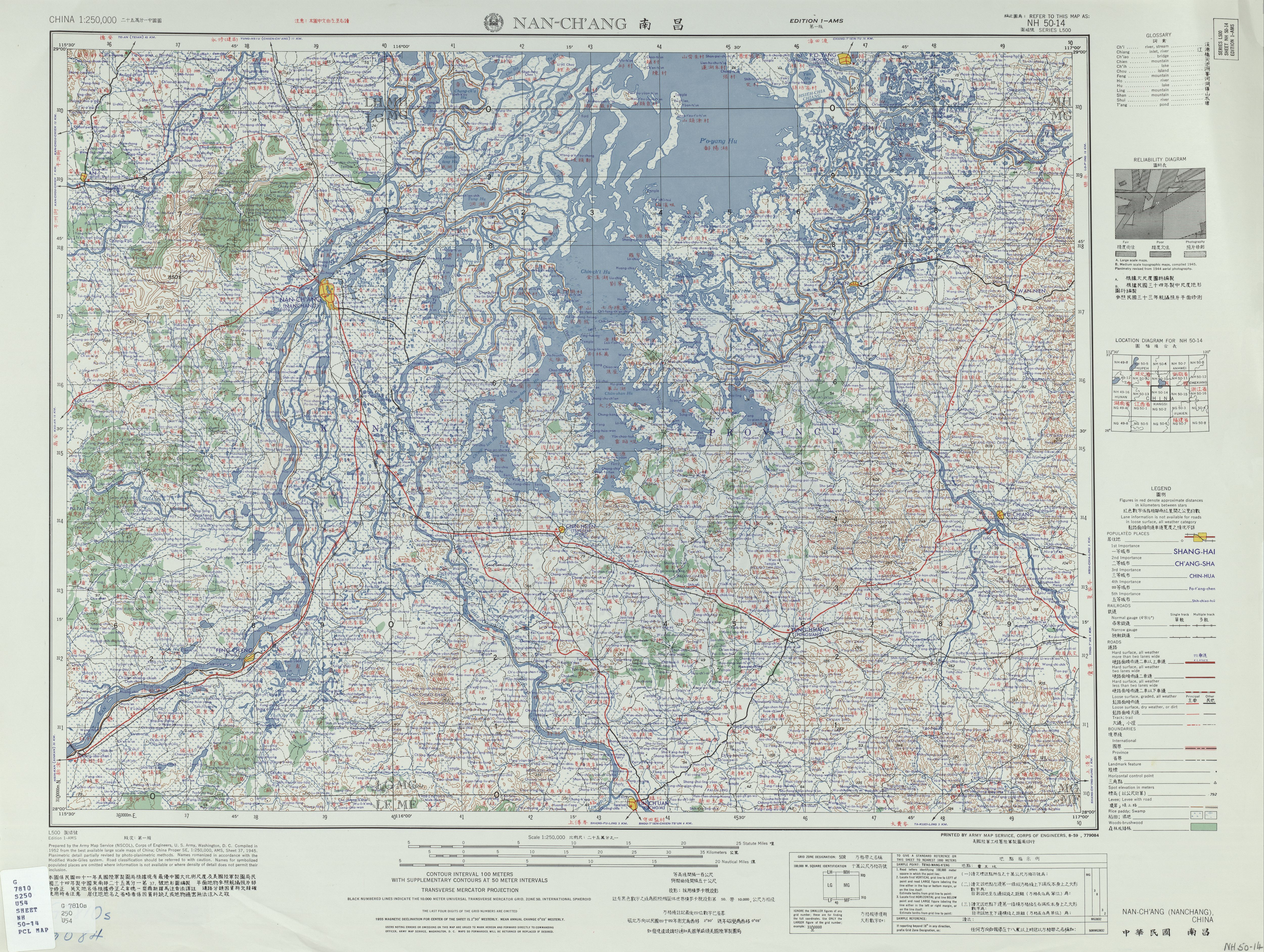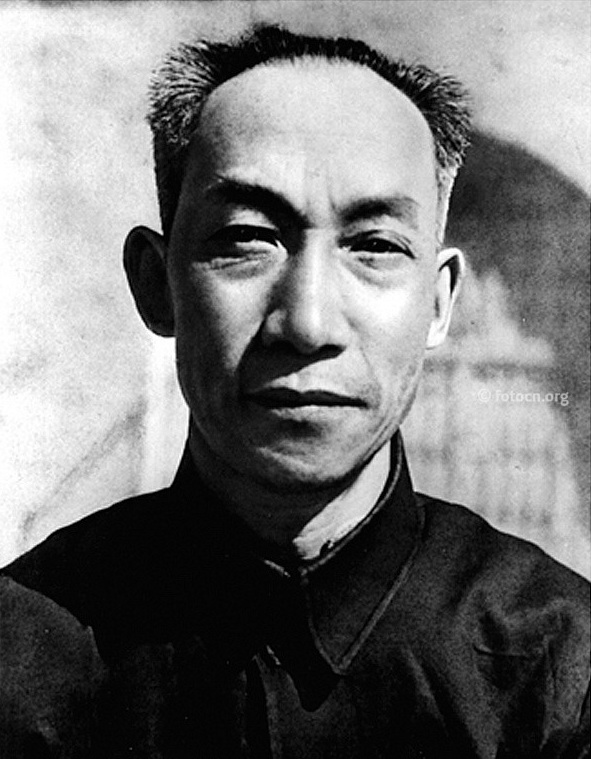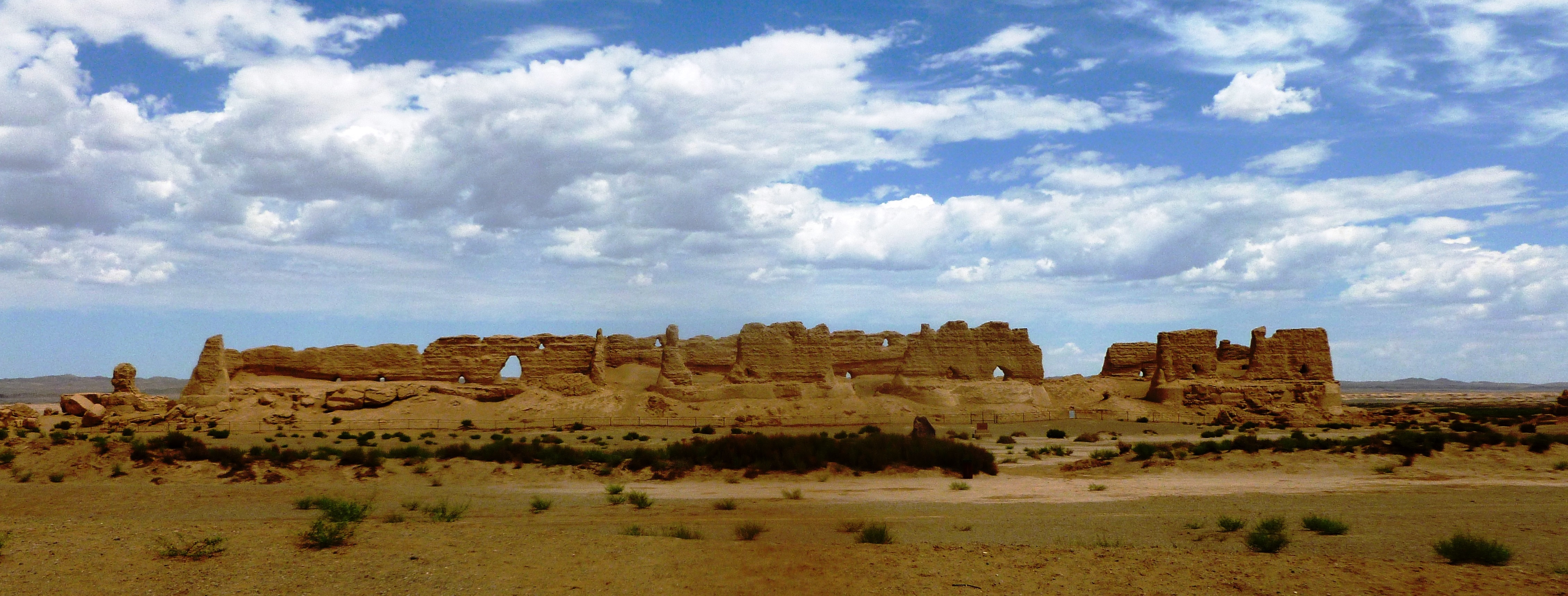|
Poyang County
Poyang County is a county under the administration of Shangrao city in the northeast of Jiangxi Province of the People's Republic of China, bordering Anhui Province to the north. It is located on the eastern side of Lake Poyang. History The area was known as Po under the Chu state during the Warring States period. Under the Qin, the area was organized as Poyang County () and placed under the administration of Jiujiang. Po was entrusted to the Yue leader Wu Rui. During the collapse of Qin, he allied first with Xiang Yu and then with Liu Bei, becoming successively the king of Hengshan and then Changsha. Under the Han, the area was known as Poyang and placed under the administration of Yuzhang. It kept the same name but changed its first character to the present one under the Western Han. During Eastern Han, the Yangtze River flowed farther north and Poyang constituted a wide and fertile lowland. Around , the Yangtze changed its course to the south and flooded the distric ... [...More Info...] [...Related Items...] OR: [Wikipedia] [Google] [Baidu] |
Postal Code Of China
Postal codes in the China, People's Republic of China () are postal codes used by China Post for the delivery of letters and goods within mainland China. China Post uses a six-digit all-numerical system with four tiers: the first tier, composed of the first two digits, show the provinces of China, province, province-equivalent direct-controlled municipalities of China, municipality, or autonomous regions of China, autonomous region; the second tier, composed of the third digit, shows the postal zone within the province, municipality or autonomous region; the fourth digit serves as the third tier, which shows the postal office within prefectures of the People's Republic of China, prefectures or prefecture-level city, prefecture-level cities; the last two digits are the fourth tier, which indicates the specific mailing area for delivery. The range 000000–009999 was originally marked for Taiwan (The Republic of China) but is not used because it not under the control of the People' ... [...More Info...] [...Related Items...] OR: [Wikipedia] [Google] [Baidu] |
Collapse Of Qin
The Qin dynasty ( ) was the first imperial dynasty of China. It is named for its progenitor state of Qin, a fief of the confederal Zhou dynasty (256 BC). Beginning in 230 BC, the Qin under King Ying Zheng engaged in a series of wars conquering each of the rival states that had previously pledged fealty to the Zhou. This culminated in 221 BC with the successful unification of China under Qin, which then assumed an imperial prerogativewith Ying Zheng declaring himself to be Qin Shi Huang, the first emperor of China, and bringing an end to the Warring States period (221 BC). This state of affairs lasted until 206 BC, when the dynasty collapsed in the years following Qin Shi Huang's death. The Qin dynasty's 14-year existence was the shortest of any major dynasty in Chinese history, with only two emperors. However, the succeeding Han dynasty (202 BC220 AD) largely continued the military and administrative practices instituted by the Qin; as a ... [...More Info...] [...Related Items...] OR: [Wikipedia] [Google] [Baidu] |
Cultural Revolution
The Cultural Revolution, formally known as the Great Proletarian Cultural Revolution, was a Social movement, sociopolitical movement in the China, People's Republic of China (PRC). It was launched by Mao Zedong in 1966 and lasted until his death in 1976. Its stated goal was to preserve Ideology of the Chinese Communist Party, Chinese socialism by purging remnants of Capitalism, capitalist and Four Olds, traditional elements from Chinese culture, Chinese society. In May 1966, with the help of the Cultural Revolution Group, Mao launched the Revolution and said that Bourgeoisie, bourgeois elements had infiltrated the government and society with the aim of restoring capitalism. Mao called on young people to Bombard the Headquarters, bombard the headquarters, and proclaimed that "to rebel is justified". Mass upheaval began in Beijing with Red August in 1966. Many young people, mainly students, responded by forming Cadre system of the Chinese Communist Party, cadres of Red Guards th ... [...More Info...] [...Related Items...] OR: [Wikipedia] [Google] [Baidu] |
Directly-controlled County
A provincial-controlled division (), is an unofficial designation for a type of administrative division of China. Every provincial-controlled divisions is officially considered to be a county-level city or county, but it has more power ''de facto'' because it is directly under the province similar to prefectural-level divisions. List of provincial-controlled divisions Hubei * Tianmen * Xiantao * Qianjiang * Shennongjia Henan * Jiyuan * Gongyi * Ruzhou * Dengzhou * Yongcheng * Huaxian (county) * Changyuan County * Lankao County * Gushi County * Luyi County * Xincai County Xinjiang :Note: all cities are governed by the Xinjiang Production and Construction Corps (XPCC, Bintuan) * Shihezi * Aral * Tumxuk * Wujiaqu * Beitun * Tiemenguan * Shuanghe Jilin * Gongzhuling * Meihekou Liaoning * Suizhong County * Changtu County Gansu * Dunhuang * Yumen Hebei * Dingzhou * Xinji Heilongjiang * Suifenhe * Fuyuan County Guizhou * Renhuai * Weining County Anhui * Guangde ... [...More Info...] [...Related Items...] OR: [Wikipedia] [Google] [Baidu] |
Poyang Lake
Poyang Lake is the largest freshwater lake in China. Located within Jiujiang Prefecture in Jiangxi Province, it is fed by the Gan, Xin, and Xiu rivers and flows northward into the Yangtze River through a channel. The area of Poyang Lake fluctuates dramatically between the wet and dry seasons, but in recent years the size of the lake has been decreasing overall. In a normal year the area of the lake averages . In early 2012, drought, sand quarrying, and the practice of storing water at the Three Gorges Dam lowered the area of the lake to about . The lake provides a habitat for half a million migratory birds and is a favorite destination for birding. During the winter, the lake becomes home to many migrating Siberian cranes, up to 90% of which spend the winter there. Formation Poyang Lake has also been called Pengli Lake () historically, but they are not the same. Before the Han dynasty, the Yangtze followed a more northerly course through what is now Longgan Lake; ''Pe ... [...More Info...] [...Related Items...] OR: [Wikipedia] [Google] [Baidu] |
Yangtze River
The Yangtze or Yangzi ( or ) is the longest river in Eurasia and the third-longest in the world. It rises at Jari Hill in the Tanggula Mountains of the Tibetan Plateau and flows including Dam Qu River the longest source of the Yangtze, in a generally easterly direction to the East China Sea. It is the fifth-largest primary river by discharge volume in the world. Its drainage basin comprises one-fifth of the land area of China, and is home to nearly one-third of the country's population. The Yangtze has played a major role in the history, culture, and economy of China. For thousands of years, the river has been used for water, irrigation, sanitation, transportation, industry, boundary-marking, and war. The Yangtze Delta generates as much as 20% of China's GDP, and the Three Gorges Dam on the Yangtze is the largest hydro-electric power station in the world. In mid-2014, the Chinese government announced it was building a multi-tier transport network, comprising railways, ... [...More Info...] [...Related Items...] OR: [Wikipedia] [Google] [Baidu] |
Western Han Dynasty
The Han dynasty was an imperial dynasty of China (202 BC9 AD, 25–220 AD) established by Liu Bang and ruled by the House of Liu. The dynasty was preceded by the short-lived Qin dynasty (221–206 BC) and a warring interregnum known as the Chu–Han Contention (206–202 BC), and it was succeeded by the Three Kingdoms period (220–280 AD). The dynasty was briefly interrupted by the Xin dynasty (9–23 AD) established by the usurping regent Wang Mang, and is thus separated into two periods—the Western Han (202 BC9 AD) and the Eastern Han (25–220 AD). Spanning over four centuries, the Han dynasty is considered a golden age in Chinese history, and had a permanent impact on Chinese identity in later periods. The majority ethnic group of modern China refer to themselves as the " Han people" or "Han Chinese". The spoken Chinese and written Chinese are referred to respectively as the "Han language" and " Han characters ... [...More Info...] [...Related Items...] OR: [Wikipedia] [Google] [Baidu] |
Chinese Character
Chinese characters are logographs used to write the Chinese languages and others from regions historically influenced by Chinese culture. Of the four independently invented writing systems accepted by scholars, they represent the only one that has remained in continuous use. Over a documented history spanning more than three millennia, the function, style, and means of writing characters have changed greatly. Unlike letters in alphabets that reflect the sounds of speech, Chinese characters generally represent morphemes, the units of meaning in a language. Writing all of the frequently used vocabulary in a language requires roughly 2000–3000 characters; , nearly have been identified and included in '' The Unicode Standard''. Characters are created according to several principles, where aspects of shape and pronunciation may be used to indicate the character's meaning. The first attested characters are oracle bone inscriptions made during the 13th century BCE in w ... [...More Info...] [...Related Items...] OR: [Wikipedia] [Google] [Baidu] |
Yuzhang Commandery
Wu Yuzhang (; given name Yongshan (); December 30, 1878 – December 12, 1966) was a Chinese politician, educator, and president of Renmin University of China from 1950 to 1966. Biography Wu Yuzhang was born in Rong County, Sichuan in 1878. He joined the Chinese Communist Party in 1925. He founded Jialing High School in Nanchong, Sichuan in 1927, and in 1950, under the auspices of Hu Yaobang, merged it with the private Jianhua Middle School founded by Mr. Zhang Lan to form the Northern Sichuan Public Nanchong High School, which is the predecessor of Sichuan Nanchong Senior High School. In the 1940s, when he was in Yan'an, he and Dong Biwu, Lin Boqu, Xu Teli, Xie Juezai were called as Yan'an Five Seniors (延安五老). (Be A Good Man for the Whole Life), ' ... [...More Info...] [...Related Items...] OR: [Wikipedia] [Google] [Baidu] |
Han Dynasty
The Han dynasty was an Dynasties of China, imperial dynasty of China (202 BC9 AD, 25–220 AD) established by Liu Bang and ruled by the House of Liu. The dynasty was preceded by the short-lived Qin dynasty (221–206 BC) and a warring interregnum known as the Chu–Han Contention (206–202 BC), and it was succeeded by the Three Kingdoms period (220–280 AD). The dynasty was briefly interrupted by the Xin dynasty (9–23 AD) established by the usurping regent Wang Mang, and is thus separated into two periods—the #Western Han (202 BC – 9 AD), Western Han (202 BC9 AD) and the #Eastern Han (25–220 AD), Eastern Han (25–220 AD). Spanning over four centuries, the Han dynasty is considered a Golden ages of China, golden age in Chinese history, and had a permanent impact on Chinese identity in later periods. The majority ethnic group of modern China refer to themselves as the "Han people" or "Han Chinese". The spoken Chinese ... [...More Info...] [...Related Items...] OR: [Wikipedia] [Google] [Baidu] |
Kingdom Of Changsha
The Changsha Kingdom was a kingdom within the Han Empire of China, located in present-day Hunan and some surrounding areas. The kingdom was founded when Emperor Gaozu granted the territory to his follower Wu Rui in 203 or 202 BC, around the same time as the establishment of the Han dynasty. Wu Rui and his descendants held the kingdom for five generations until Wu Zhu died without an heir in 157 BC. In 155 BC, the kingdom was reestablished for a member of the imperial family. However, the creation of this second kingdom coincided with the Rebellion of the Seven States and the subsequent reforms under Emperor Jing, and Changsha under the imperial family saw its autonomy greatly diminished. The kingdom was dissolved during Wang Mang's usurpation (AD 9 – 23), briefly restored after the founding of the Eastern Han, and finally abolished in and converted to a commandery under the imperial government. Changsha was one of the largest and longest-lasting kingdoms in Han China. D ... [...More Info...] [...Related Items...] OR: [Wikipedia] [Google] [Baidu] |
Kingdom Of Hengshan
Kingdom commonly refers to: * A monarchic state or realm ruled by a king or queen. ** A monarchic chiefdom, represented or governed by a king or queen. * Kingdom (biology), a category in biological taxonomy Kingdom may also refer to: Arts and media Television * ''Kingdom'' (British TV series), a 2007 British television drama starring Stephen Fry * ''Kingdom'' (American TV series), a 2014 US television drama starring Frank Grillo * ''Kingdom'' (South Korean TV series), a 2019 South Korean television series *'' Kingdom: Legendary War'', a 2021 South Korean television series * Kingdom (Friday Night Lights), an episode of the TV series Friday Night Lights * "Kingdom" (''Runaways''), an episode of ''Runaways'' Music * Kingdom (group), a South Korean boy band * ''Kingdom'' (Koda Kumi album), 2008 * ''Kingdom'' (Bilal Hassani album), 2019 * ''Kingdom'' (Covenant Worship album), 2014 * ''Kingdoms'' (Life in Your Way album), 2011 * ''Kingdoms'' (Broadway album), 2009 * ''Kingd ... [...More Info...] [...Related Items...] OR: [Wikipedia] [Google] [Baidu] |






